An Irish Childhood in England 1951;This is a trickier question than you might think The poem you're reading, "How do I love thee?Mar 4, 19 This is a readytoteach handout for a lesson or unit based on Elizabeth Jennings's iconic poem "In Praise of Creation" The poem is also on the IGCSE English Literature curriculum for exams in and 21, but the handout and worksheet can be used i
Www Troup K12 Ga Us Userfiles 929 My files Ela Hs ela 12th ela Unit 2 12th ela unit 2 Pdf Id
How do i love thee analysis line by line
How do i love thee analysis line by line-We will write a custom essay on How do I Love Thee Analysis specifically for you for only $1638 $139/page Order now This poem is an Italian sonnet, shown by its rhyming patterns of ABBAABBACACDCD, and has a masculine rhyme, which means that the rhyming word is a one syllable word, in general, using 'se' and 'th' ending words to create an underlining theme of love and a romantic atmosphere, also creating a rhythmic and soothing pattern within the readers mindTrust some or all of your schoolwork How Do I Love Thee Essay to us and set yourself free from academic How Do I Love Thee Essay stress All you need to do is go online, give us a call or send a chat message and say "Do my assignment" Our experts will take on task that you give them and will provide online assignment help that will skyrocket your grades Do not hesitate, place an order and let qualified professionals do all the work


Www Journals Uchicago Edu Doi Pdfplus 10 1086 Twc
And, if God choose, I shall but love thee better after death" Love is the tone of the poem, and we feel the love from the very firstA technique called anaphora, or repetition of the words "I love thee" is used in the poem that emphasizes the intensity of the speaker's love Alliteration, the repetition of consonants, is also used Examples include purely and praise in line 8, passion and put in line 9, and love and lose in line 11How do I love thee?
Let Me Count the Ways," appeared in Elizabeth Barrett Browning's Sonnets from the Portuguese in 1850 The poem is one of Browning's most famous works and is an important fixture of the Victorian literary canonThe title may come from a letter Owen wrote in May 1917 that quoted from the Gospel "Greater love hath no man than this, that a man lay down his life – for a friend Is it spoken in English only and French?And, if God choose, I shall but love thee better after death" Love is the tone of the poem, and we feel the love from the very first
The light stranger at qfcI love thee purely, as they turn from Praise I love with a passion put to use In my old griefs, and with my childhood's faith I love thee with a love I seemed to lose With my lost saints I love thee with the breath, Smiles, tears, of all my life!I love thee with the breath, Smiles, tears, of all my life!– and, if God choose, I shall but love thee better after death freely willingly–and just as intensely as men who fight for freedom purely genuinely, without desire for praise with an intensity equal to that experienced during suffering or mourning;


Elizabeth Barrett Browning Ocr Search Results Teachit English



Testi įkvėpkite Purtyti Love After Love Poem Analysis Comfortsuitestomball Com
Sonnet 43, also known as "How Do I Love Thee?Her love is unconditional and therefore free;Trust some or all of your schoolwork How Do I Love Thee Essay to us and set yourself free from academic How Do I Love Thee Essay stress All you need to do is go online, give us a call or send a chat message and say "Do my assignment" Our experts will take on task that you give them and will provide online assignment help that will skyrocket your grades Do not hesitate, place an order and let qualified professionals do all the work



Elizabeth Barrett Browning Sonnet 43 Annotation Youtube


2
I love thee purely, as they turn from Praise I love thee with the passion put to use In my old griefs, and with my childhood's faith I love thee with a love I seemed to lose With my lost saintsAnd, if God choose, I shall but love thee better after death"I love thee with the breadth, smiles, tears, of all my life;



Analysis Of Poem How Do I Love Thee By Elizabeth Barrett Browning Owlcation Education



Teaching Shakespearean Sonnets In Secondary Ela Bespoke Ela Essay Writing Tips Lesson Plans
For the ends of being and ideal grace I love thee to the level of every day's Most quiet need, by sun and candlelight I love thee freely, as men strive for right I love thee purely, as they turn from praise I love thee with the passion put to use In my old griefs, and with my childhood's faithHe who has the vision;The poem fortythree which starts with "How do I love thee?" is composed of fourteen lines telling us the tale of her love story HOW DO I LOVE THEE?


Http Media Freeola Com Other Relationships Sonnet43 1 Pdf


2
Elizabeth Barrett Browning wrote it as a collection of a total of 44 love sonnets, which became very popular during her time, and have been immortalized in numerous quotations;Browning uses the anaphora, (the repetition of the same word or group of words at the beginning of successive clauses) in eight lines appears the same sentence, "I love thee" except at the end, in the final line in which she uses "I shall but love thee" to emphasizedAn analogy an also be seen in the following line, as she states, "l love thee purely, as they turn from Praise," insisting her love is as modest and pure as the hearts of those men who are striving for justice The last line of the sonnet states, ' shall but love thee better after death



Gcse English Edex Poetry Relationship Amazon Com Books



Gcse English Edex Poetry Relationship Amazon Com Books
May 21, 13 by Shreya Bardhan How do I love thee by Elizabeth Barrett Browning is a poem from the Sonnet from the Portuguese sequence which the poet had written during her days of courtship by Robert Browning This poem is a true reflection of the intense love which the poet felt for her beloved This article provides a complete summary and analysis of how do I love thee by BrowningIn times of peace;How do I love thee?


11 Duffy Ms Elliott S English



Analysis Of The Poem To A Skylark By Percy Bysshe Shelley Owlcation Education
I love thee to the depth and the breadth and the height There is an internal rhyme with the words "depth" and "breadth" and places height between them as to indicate the extent;Sonnet fortythree By Elizabeth Barrett Browning How do I love thee?Browning uses the anaphora, (the repetition of the same word or group of words at the beginning of successive clauses) in eight lines appears the same sentence, "I love thee" except at the end, in the final line in which she uses "I shall but love thee" to emphasized Thanks of this repetition a rhythm is created while reinforcing the theme


Www Journals Uchicago Edu Doi Pdfplus 10 1086 Twc
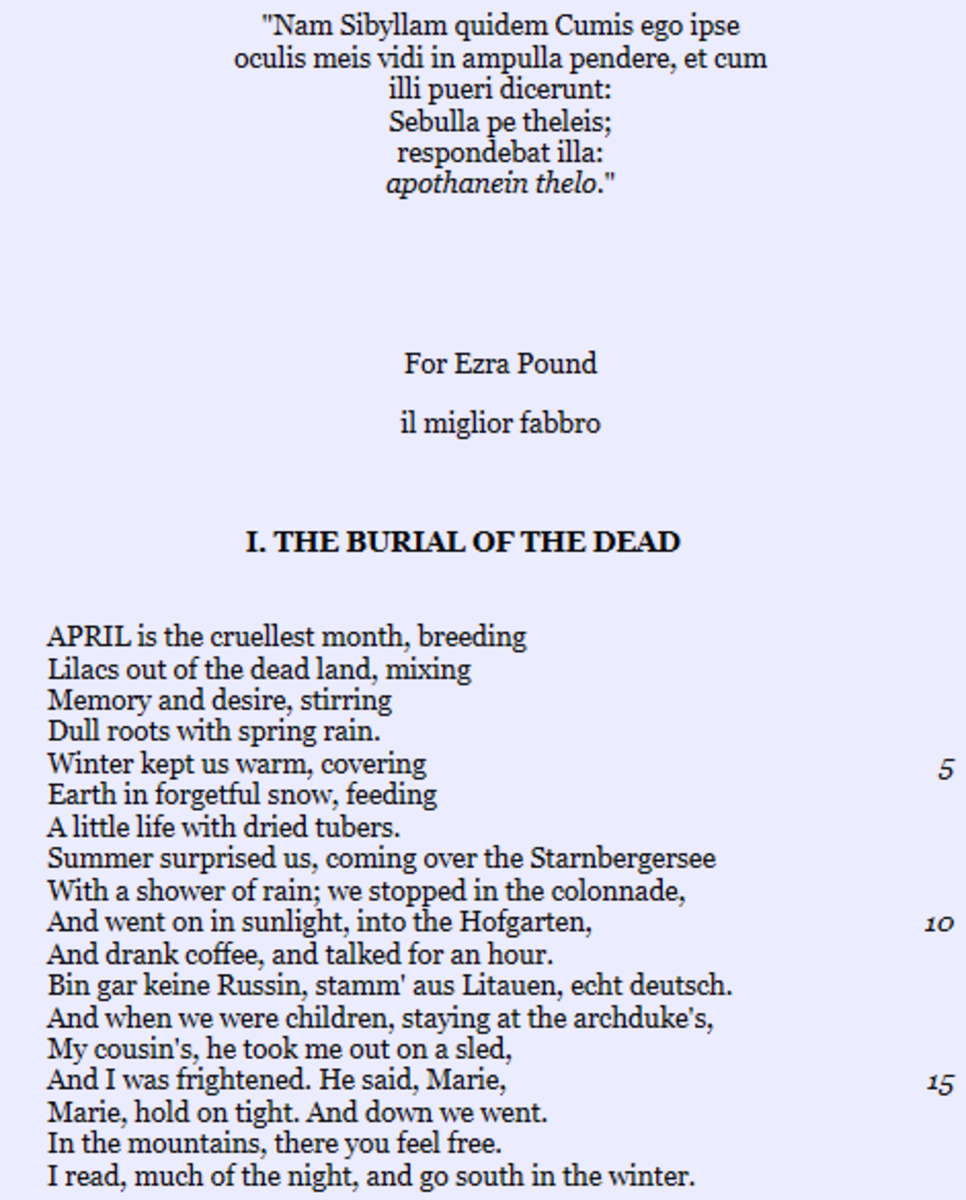


Analysis Of The Poem The Waste Land By T S Eliot Owlcation Education
Let me count the ways I love thee to the depth and breadth and height My soul can reach, when feeling out of sight For the ends of being and ideal grace I love thee to the level of every day's Most quiet need, by sun and candleHow do I love thee?Premiered in Los Angeles on October 1, 1970 It was a box office failure and recorded an overall loss of $2,425,000 It earned rentals of $150,000 in North America and $125,000 in other countries See also List of American films of 1970;



Annotating The Exam Anthology Mrs Nazir S Rhyme And Reason


Q Tbn And9gct9nnvuyn4yxv9jm4pxf73n654vwx5zwsmvhe9wkblkeysiyz71 Usqp Cau
I love thee freely, as men strive for Right;I love you with the blind faith of a child with saints with a childlike fervor for saints and holiness that I seemed to lose when I grew olderLines 914 Lines 9 14 The sestet starts at line nine


Ks5 Language And Literature Anthology Poetry For Edexcel 15 Onwards Teachit English



Analysis Of Poem Prayer Before Birth By Louis Macniece Owlcation Education
Sonnet 43, also known as "How Do I Love Thee?I love thee with the pafsion, put to useBe changed, or change for thee—and love, so wrought, May be unwrought so Neither love me for Thine own dear pity's wiping my cheeks dry A creature might forget to weep, who bore Thy comfort long, and lose thy love thereby!
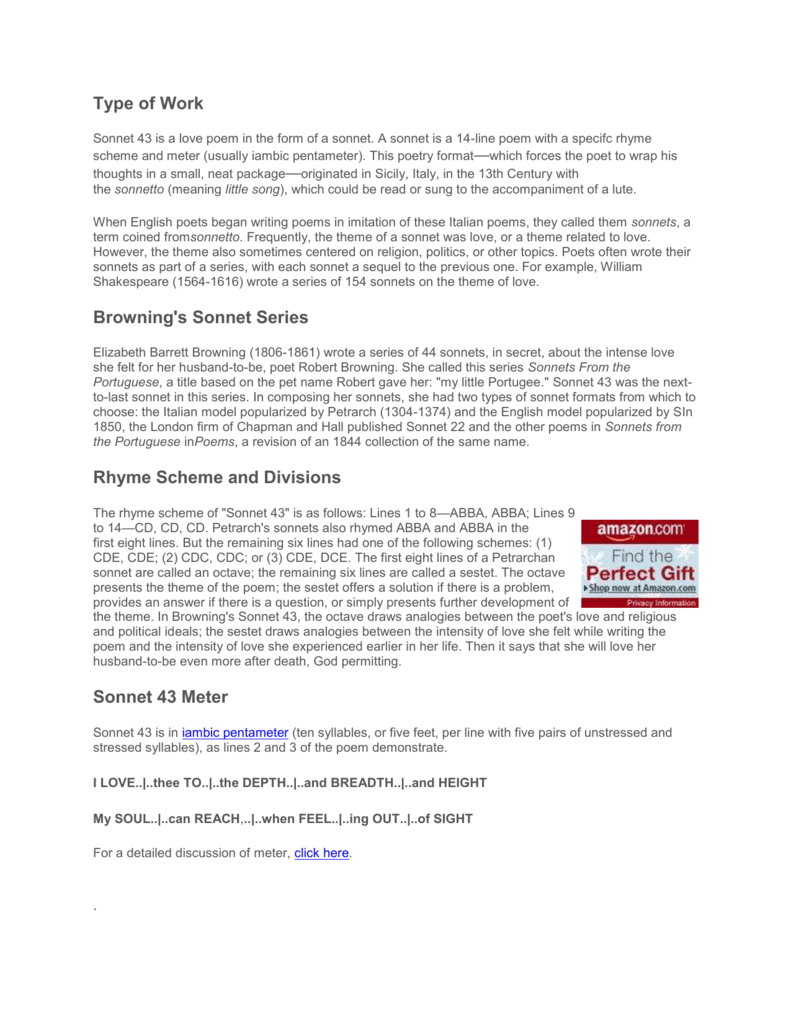


Sonnet 43 Browning Doral Academy Preparatory
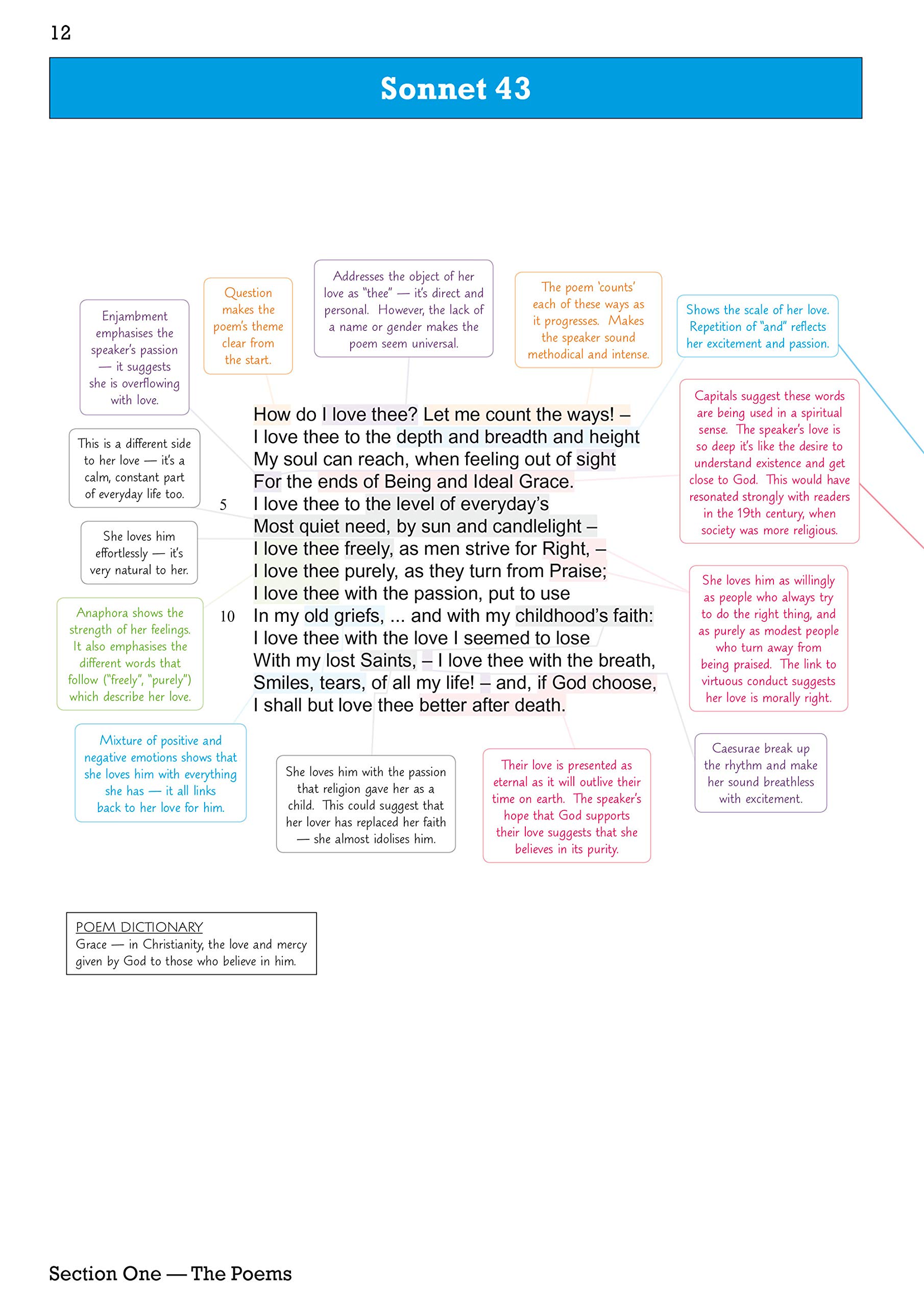


Gcse English Edex Poetry Relationship Amazon Com Books
Ow Do I Love Thee?" (Sonnet 43) by Elizabeth Barrett Browning, Your assignment should include the following elements Eight annotations, each of which focuses on a separate line of the poem you've chosen from the list above An introduction paragraph that explains the overall meaning of the poem and puts the annotations in context The full textThe sound of the sleeping forest;The poem begins with a simple question "Shall I compare thee to a summer's day?" It's a yes/no question that evokes a 13 line "no" and explains why with, ironically, a comparison to a summer's day


Notated Music 1900 To 1999 Hymns English Library Of Congress



Analysis Of Poem How Do I Love Thee By Elizabeth Barrett Browning Owlcation Education
How Do I Love Thee?Let me count the ways I love thee to the depth and breadth and height My soul can reach, when feeling out of sight For the ends of being and ideal grace I love thee to the level of every day's Most quiet need, by sun and candlelight I love thee freely, as men strive for right I love thee purely, as they turn from praise I love thee with the passion put to useIn fact, one of the most common quotes – 'how do I love thee, let me count the ways' – though often attributed to Shakespeare, is actually a line from Sonnet 43 of the same collection
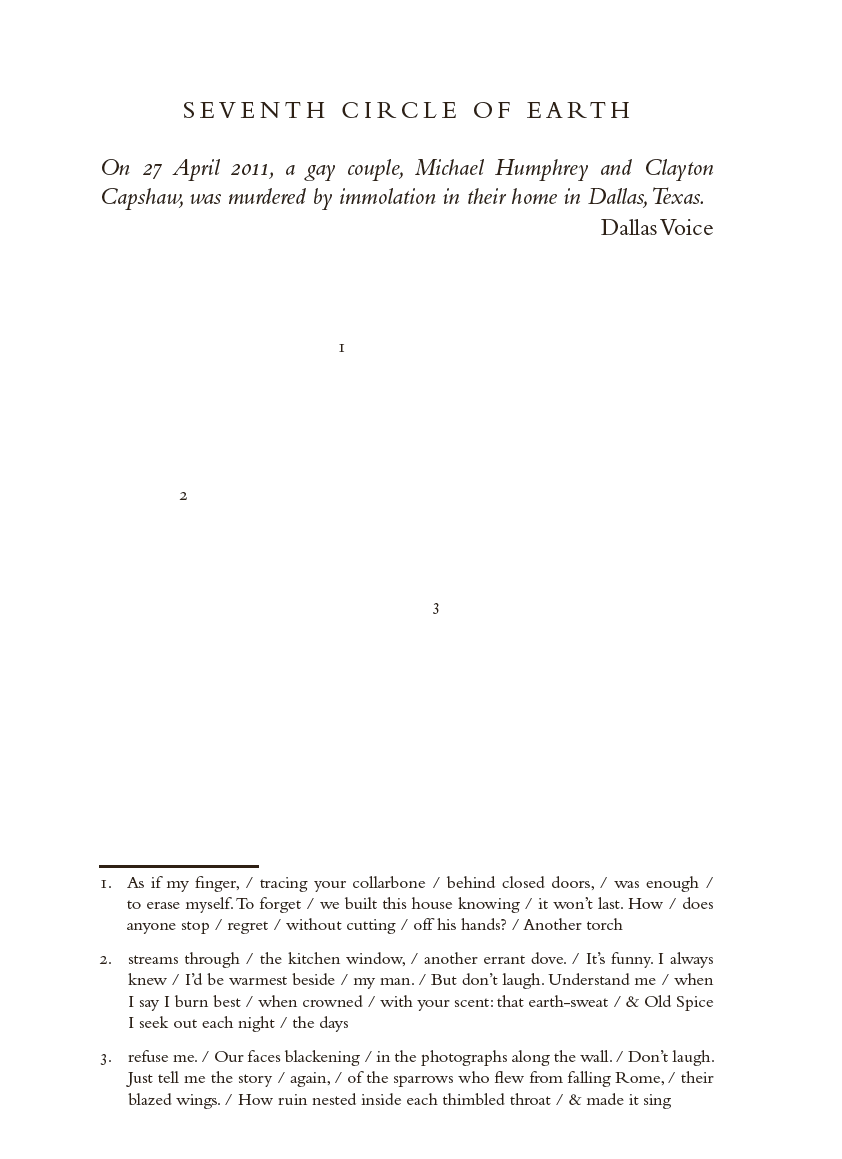


Verse Ib English A Language And Literature Hl



How Do I Love Thee Let Me Count The Ways Sonnets From The Portugese 43 Poem Summary And Analysis Litcharts
In fact, one of the most common quotes – 'how do I love thee, let me count the ways' – though often attributed to Shakespeare, is actually a line from Sonnet 43 of the same collectionIt is a force for good, consciously given because it feels like the right thing to do She doesn't want any thanks for this freely given love;I love thee to the depth & breadth & height My soul can reach, when feeling out of sight For the ends of Being and Ideal Grace I love thee to the level of everyday's Most quiet need , by sun & candlelight I love thee freely, as men strive for right, I love thee purely, as they turn from Praise !



Shakespeare Sonnet 141 Analysis In Faith I Do Not Love Thee With Mine Eyes Shakespeare Works



Elizabeth Barrett Browning Ppt Download
"How Do I Love Thee" by Elizabeth Barrett Browning ➡ UPDATED WITH NEW ADDED FEATURES⚡ "How Do I Love Thee" is part of our Poetry Series designed to improve annotation skills, bolster reading comprehension, and cultivate literary appreciation CONTENTS • "SidebySide" Annotation Organizer ThI love thee freely, as men strive for right I love thee purely, as they turn from praise I love thee with the passion put to use In my old griefs, and with my childhood's faith I love thee with a love I seemed to lose With my lost saints I love thee with the breath, Smiles, tears, of all my life;The speaker then answers her own rhetorical question—"How do I love thee?"—by declaring "Let me count the ways" This is an assertive, declarative sentence that positions the speaker as firmly in charge of the poem's narrative, an impression furthered by her frequent use of "I" and "me" pronouns throughout



Literature At Las Cumbres We Are Producing Knowledge Page 2



Elizabeth Barrett Browning Ppt Download
Writing about emotional experiences is associated with a host of positive outcomes This study extended the expressivewriting paradigm to the realm of romantic relationships to examine the social effects of writingI love thee purely, as they turn from praise I love thee with the passion put to use In my old griefs, and with my childhood's faith I love thee with a love I seemed to lose With my lost saintsLet me count the ways," doesn't actually have a title The sonnet sequence that it's a part of is tit



How Do I Love Thee Poem By Elizabeth Barrett Browning Sonnet 43 Youtube



Pin On Middle School Worksheets Printables
Assonance Assonance is the repetition of vowel sounds in the same line such as the sound of /ee/ and /i/ in "I love thee freely, as men strive for right;" and the sound of /e/ in "I love thee to the depth and breadth and height"But while the romantic love between the titular characters is often what we think of when we consider the love theme in "Romeo and Juliet," Shakespeare's treatment of the concept of love is complex and multifaceted Through different characters and relationships, he portrays some of the various types of love and the different ways it can manifestElizabeth Barrett Browning wrote it as a collection of a total of 44 love sonnets, which became very popular during her time, and have been immortalized in numerous quotations;
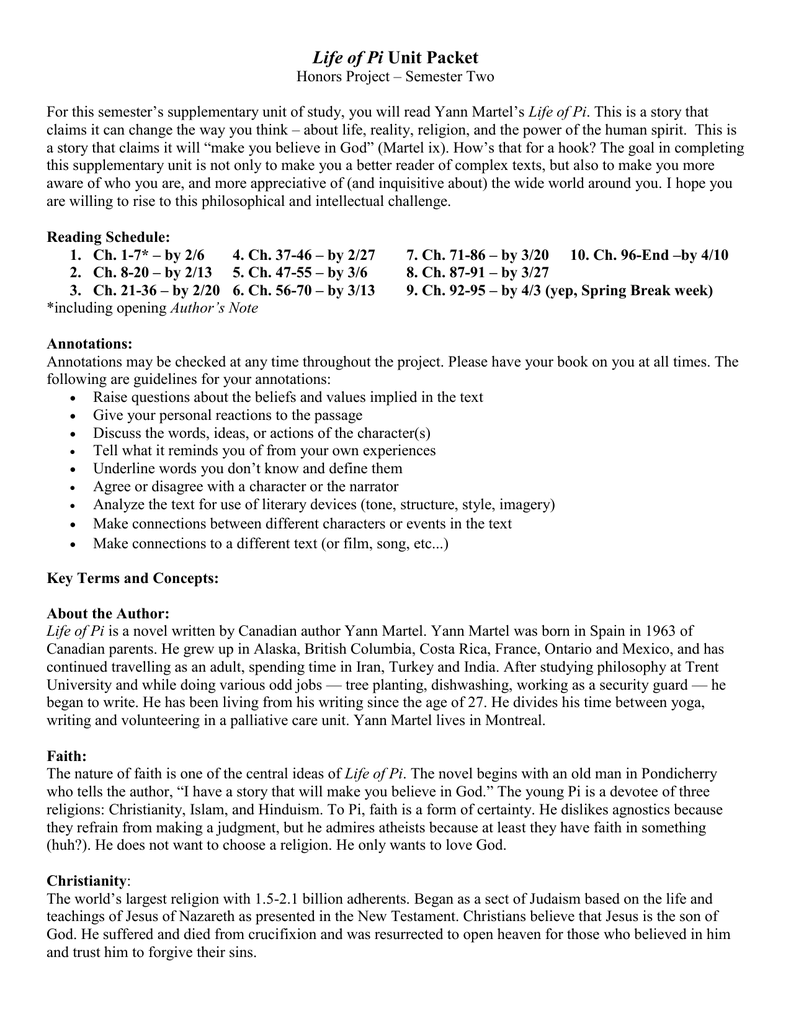


Advanced Dialectical Journal For Life Of Pi By Yann Martel



Sonnet 43 By Elizabeth Barrett Browning Gcse Analysis Youtube
"I love thee with the breadth, smiles, tears, of all my life;The passionate sheperd to his love;In summary, 'The Love Poem' is a poem about the difficulty of writing a love poem The context of the poem is important the whole of Rapture is about a love affair It's like a modernday sonnet sequence, only the poems are not sonnets but written in a whole range of different forms and styles, including free verse


Dx7dcnpi6xo23 Cloudfront Net Files Linked Files 94c9dadd7d4aecb4dabeba3fa0a45d79ae4b


Http Www Uh Edu Honors Programs Minors Honors And The Schools Houston Teachers Institute Curriculum Units Pdfs 09 Shakespeare Hall 09 Shakespeare Pdf
Ow Do I Love Thee?" (Sonnet 43) by Elizabeth Barrett Browning, Your assignment should include the following elements Eight annotations, each of which focuses on a separate line of the poem you've chosen from the list above An introduction paragraph that explains the overall meaning of the poem and puts the annotations in context The full textTo annotate a poem is to analyze and understand it better It involves reading the poem to identify the writing style, rhyme scheme, figures of speech, the poem's true meaning, and its interpretations This Penlighten article tells you how to annotate a poem step by step, with the help of an exampleHow Do I Love Thee;


Le Dr Dill Abstract Europe Pmc



Pdf From Love To Hate A Story Of Germania And Sam Annotations To The History Of American German Relations
Freely willingly and just as intensely as men who fight for freedom I love thee purely, as they turn from Praise purely genuinely, without desire for praise I love thee with the passionIn summary, 'The Love Poem' is a poem about the difficulty of writing a love poem The context of the poem is important the whole of Rapture is about a love affair It's like a modernday sonnet sequence, only the poems are not sonnets but written in a whole range of different forms and styles, including free verseThe sound of the sleeping forest ;
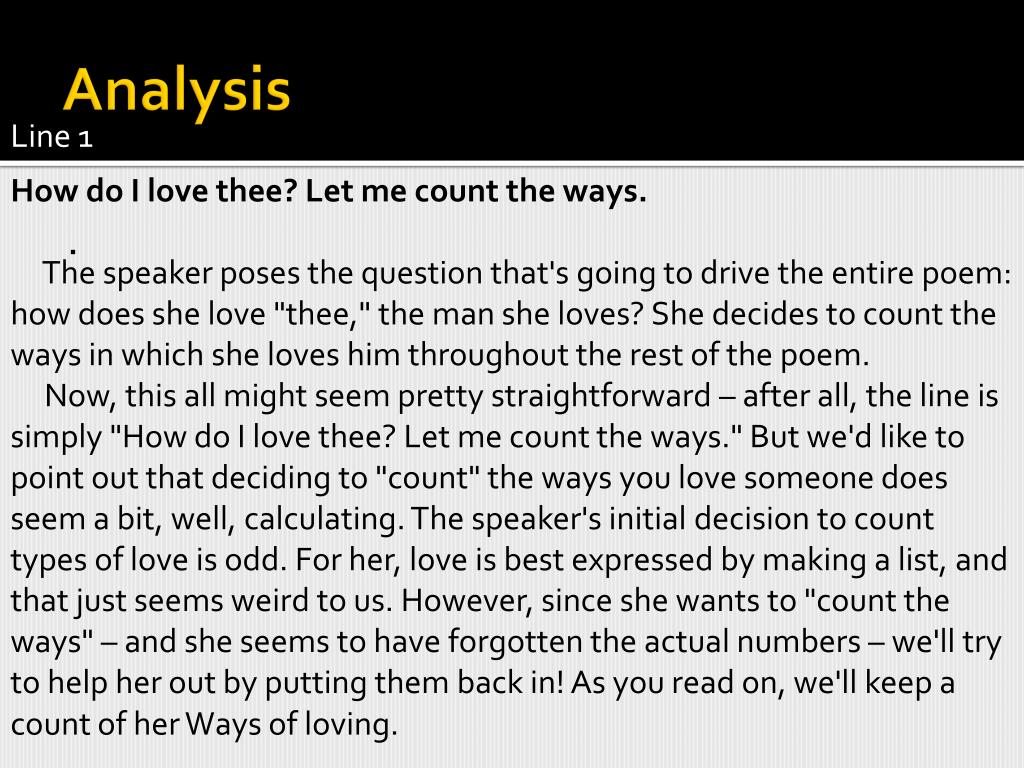


Ppt How Do I Love Thee Powerpoint Presentation Free Download Id


Www Troup K12 Ga Us Userfiles 929 My files Ela Hs ela 12th ela Unit 2 12th ela unit 2 Pdf Id
Mar 4, 19 This is a readytoteach handout for a lesson or unit based on Elizabeth Jennings's iconic poem "In Praise of Creation" The poem is also on the IGCSE English Literature curriculum for exams in and 21, but the handout and worksheet can be used iHow Do I Love Thee?Learn how the choice of words and phrases in a poem impacts the overall meaning and tone In this interactive tutorial you'll examine Sonnet 43, "How Do I Love Thee?" by Elizabeth Barrett Browning and engage in a critical analysis of the language, reflect on your own interpretations, and write about what you have learned
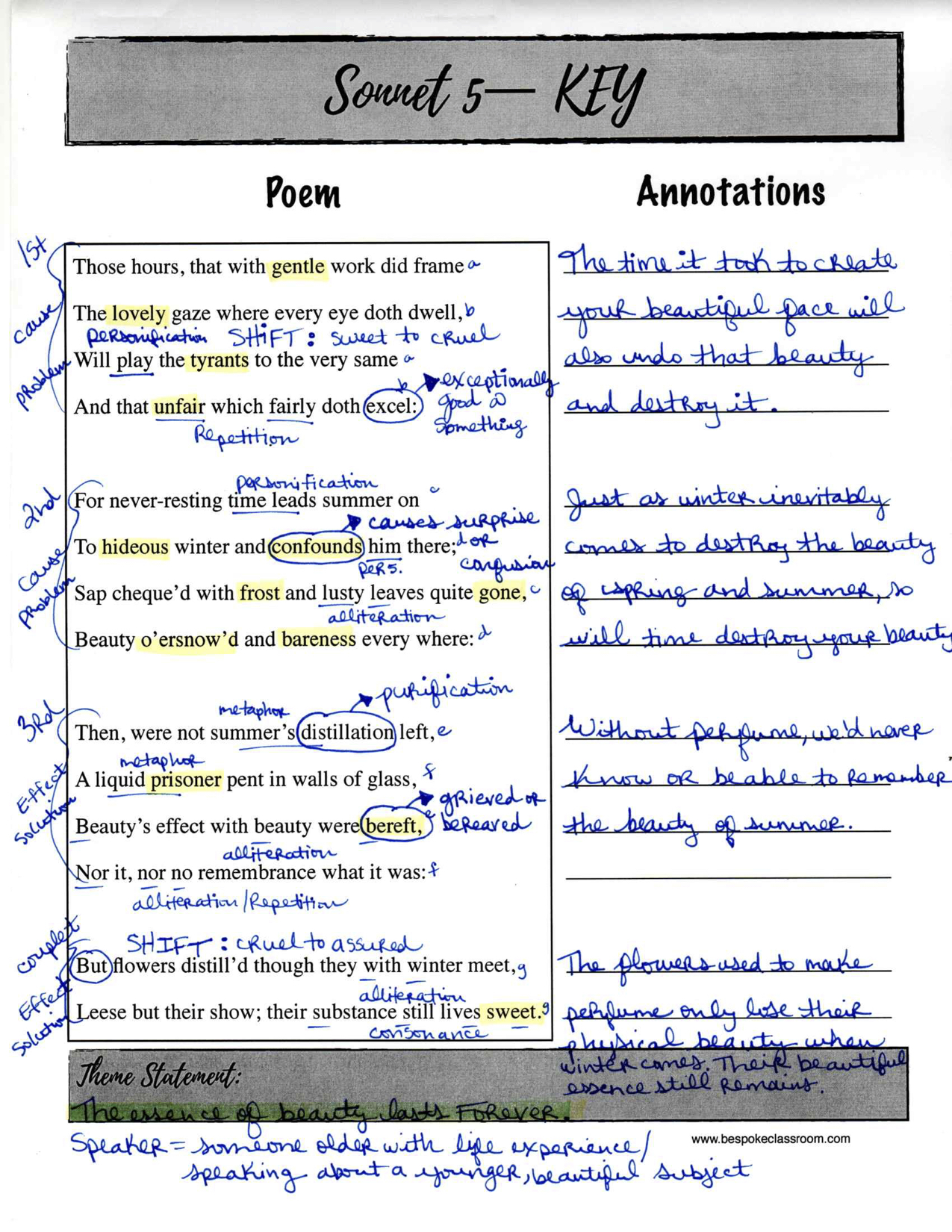


Teaching Shakespearean Sonnets In Secondary Ela Bespoke Ela Essay Writing Tips Lesson Plans



Aqa Poetry Anthology Love Relationship Amazon Com Books
The repetition of "I love thee" serves as a constant reminder, but it is the depth of love, not the quantity of love, that gives the poem its power She loves for example, "the depth and breadth and height / My soul can reach," and "To the level of every day's / Most quiet need"And, if God choose, I shall but love thee better after deathLet me count the ways (Sonnet 43) Summary The speaker asks how she loves her beloved and tries to list the different ways in which she loves him Her love seems to be eternal and to exist everywhere, and she intends to continue loving him after her own death, if God lets her Previous Next



Annotating The Exam Anthology Mrs Nazir S Rhyme And Reason


National American Woman Suffrage Association Records General Correspondence 19 1961 Mott Lucretia Library Of Congress
An analogy an also be seen in the following line, as she states, "l love thee purely, as they turn from Praise," insisting her love is as modest and pure as the hearts of those men who are striving for justice The last line of the sonnet states, ' shall but love thee better after deathHow do I love thee?I love thee purely, as they turn from Praise Analysis The Religious tone is shifted to secular human interests and personifies her love as men who's human's quality is both righteous& humble In 1845 Robert Browning began to write letters to Elizabeth declaring his love to her
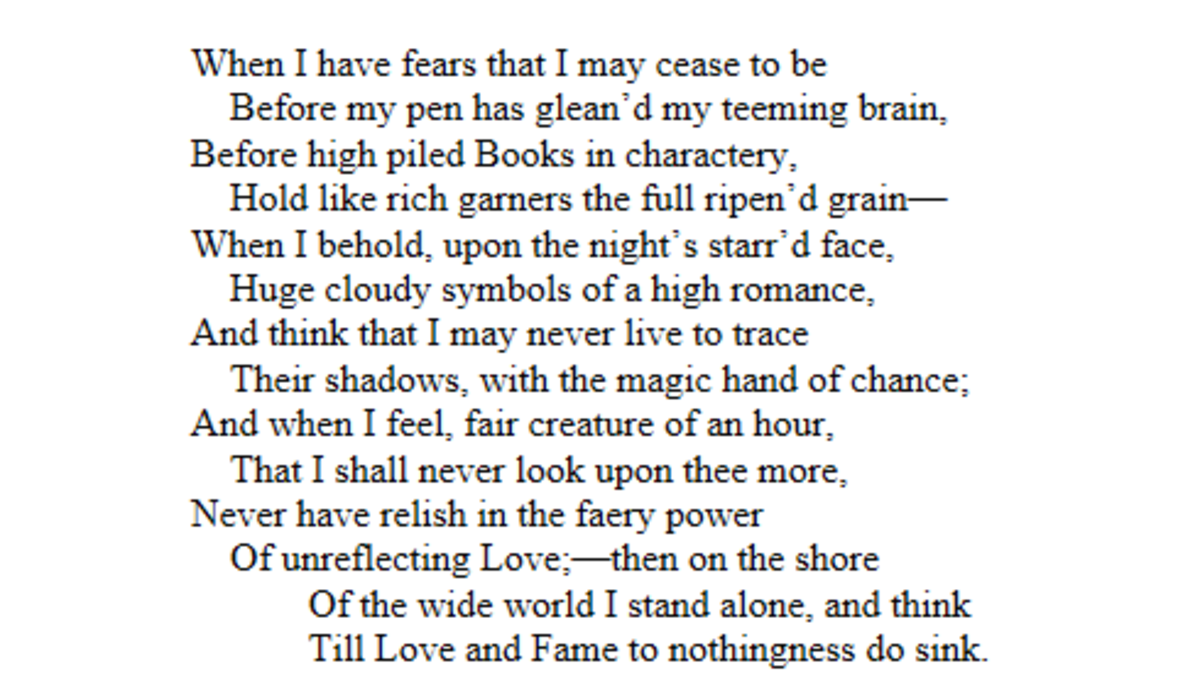


Analysis Of Sonnet When I Have Fears By John Keats Owlcation Education



Romeo Quotations And Analysis English Gcse Revision Gcse Revision English Literature Classroom
(out of sight) to find the goal of being alive and living uprightly I love thee to the level of everyday\'s I love you enough to meet all of your simple needs during the Most quiet need, by sun and candlelight day (sun) and even during the night (candlelight) I love thee freely, as men strive for Right;It is a humble kind of love, untainted by the ego How Do I Love Thee?Depth of her love This is a special way of saying that her love for her beloved is three dimensional



Gcse Poetry Sonnet 43 Revision Youtube
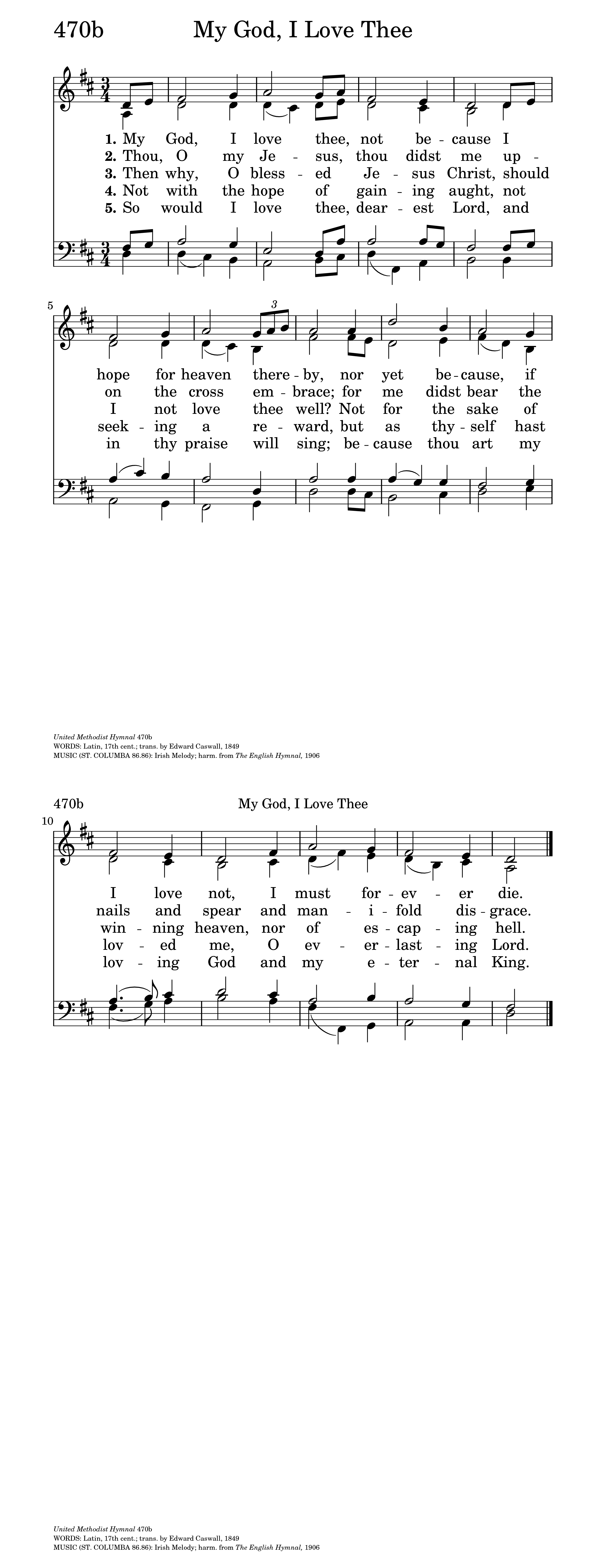


My God I Love Thee Not Because Hymnary Org
How Do I Love Thee?They will also be able to properly use annotation symbols to appropriately mark a text Through predictions, paired discussion, and realtime assessment, students explore the hula dance While reading the text, students use annotation symbols to mark the text After reading the text and viewing pictures, they discuss the text as a class and inLet me count the ways I love thee to the depth and breadth and height My soul can reach, when feeling out of sight For the ends of Being and ideal Grace I love thee to the level of everyday's Most quiet need, by sun and candlelight I love thee freely, as men strive for Right;



Annotating The Exam Anthology Mrs Nazir S Rhyme And Reason
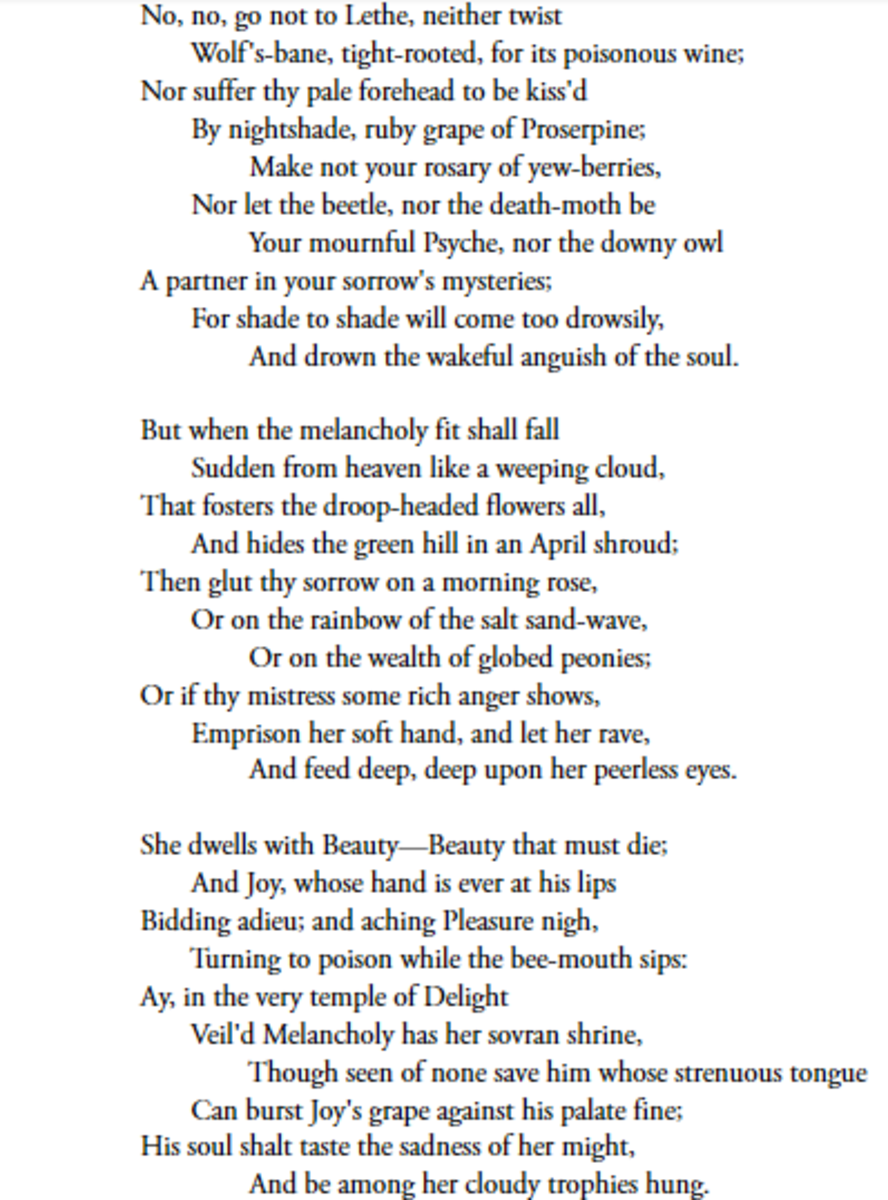


Analysis And Summary Of Poem Ode On Melancholy By John Keats Owlcation Education
I do not believe so" (see "Le Christianisme" Summary and Analysis for more on Owen's religious views)How do I Love Thee Analysis Essay The poem, 'How do I love thee' is an iambic pentameter poem, starting with an unaccented syllable, and then an accented syllable This is also a lyric poem as it contains a lot of emotion, sparks the readers imagination, and has a melody like that of an epigram or hymn This is shown by the rhythm the poem has when read correctly, which is created by the use of enjambmentOw Do I Love Thee?" (Sonnet 43) by Elizabeth Barrett Browning, Your assignment should include the following elements Eight annotations, each of which focuses on a separate line of the poem you've chosen from the list above An introduction paragraph that explains the overall meaning of the poem and puts the annotations in context The full text


Sonnet 130 My Mistress Eyes Search Results Teachit English


Dhq Digital Humanities Quarterly From Distracted To Recursive Reading Facilitating Knowledge Transfer Through Annotation Software
But love me for love's sake, that evermore Thou mayst love on, through love's eternityLet me count the ways I love thee to the depth and breadth and height My soul can reach, when feeling out of sight For the ends of being and ideal graceI love thee to the level of every day's Most quiet need, by sun and candlelight I love thee freely, as men strive for right I love thee purely, as they turn from praise I love thee with the passion put to use In my old griefs, and with my childhood's faith I love thee with a love I seemed to lose With my lost saints I love thee with the breath,



Pdf Like Melville On The Leaf Of Shakespeare Olson S Annotations To Ace Of Pentacles By John Wieners


Sonnet 130 My Mistress Eyes Search Results Teachit English
To annotate a poem is to analyze and understand it better It involves reading the poem to identify the writing style, rhyme scheme, figures of speech, the poem's true meaning, and its interpretations This Penlighten article tells you how to annotate a poem step by step, with the help of an exampleWriting about emotional experiences is associated with a host of positive outcomes This study extended the expressivewriting paradigm to the realm of romantic relationships to examine the social effects of writingThe poem begins with a simple question "Shall I compare thee to a summer's day?" It's a yes/no question that evokes a 13 line "no" and explains why with, ironically, a comparison to a summer's day



Poetry Project Ballads Portfolio



How Do I Love Thee Sonnet 43 Elizabeth Barrett Browning Poem Analysis Annotations Gcse English Analysis
I love thee purely, as they turn from Praise I love thee with the passion put to use In my old griefs, and with my childhood's faith I love thee with aMost quiet need, by sun and candlelight I love thee freely, as men strive for right;Clear Night "The Cross of Snow" Faces;



Teaching Shakespearean Sonnets In Secondary Ela Bespoke Ela Essay Writing Tips Lesson Plans
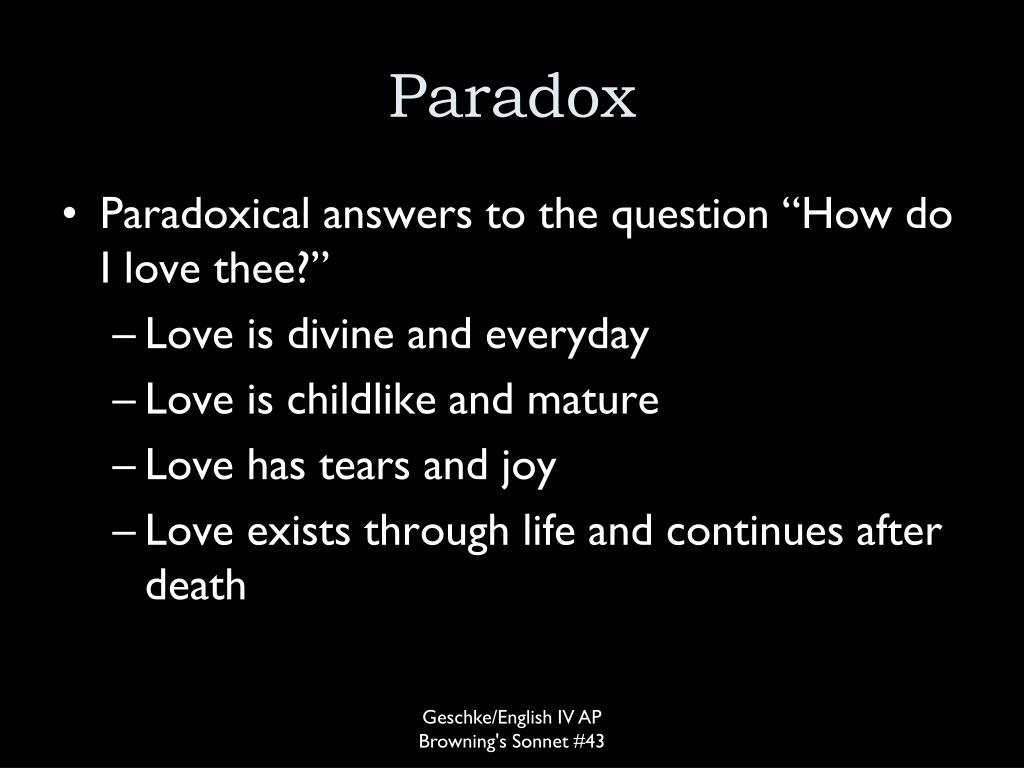


Ppt Sonnet 43 How Do I Love Thee Powerpoint Presentation Free Download Id
How do I love thee?Let Me Count the Ways," appeared in Elizabeth Barrett Browning's Sonnets from the Portuguese in 1850 The poem is one of Browning's most famous works and is an important fixture of the Victorian literary canonThey will also be able to properly use annotation symbols to appropriately mark a text Through predictions, paired discussion, and realtime assessment, students explore the hula dance While reading the text, students use annotation symbols to mark the text After reading the text and viewing pictures, they discuss the text as a class and in
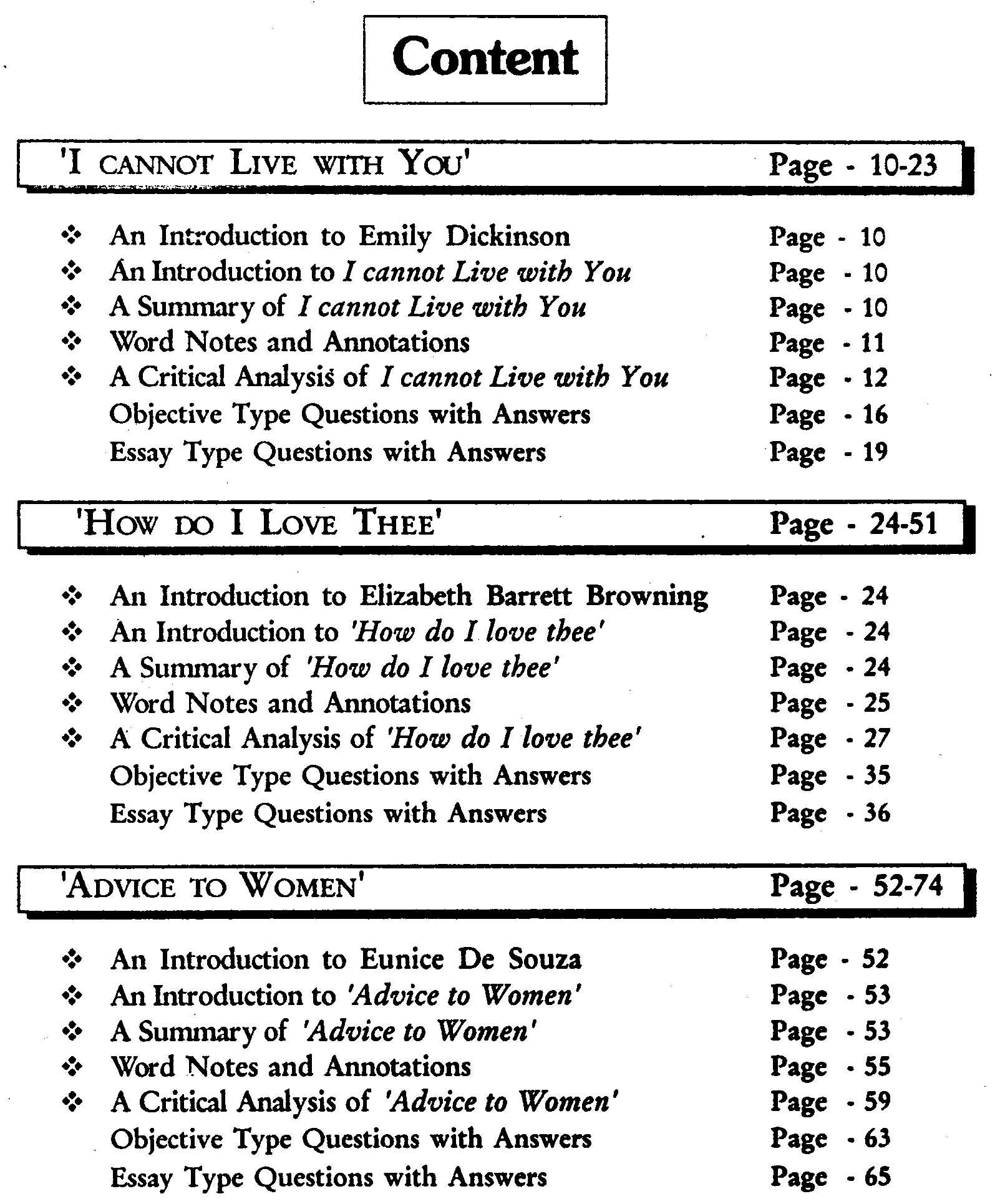


Amazon In Buy Cbcs English Honours Handbook On Women S Writing Cc 11 Semester V For Calcutta University Book Online At Low Prices In India Cbcs English Honours Handbook On Women S Writing Cc 11 Semester V For



Analysing Elizabeth Barrett Browning S Sonnet 43 Part One Dystopiajunkie Analysis Youtube
The question is simply, "How do I love thee?" The answer involves seven different aspects of love, all of which are part of Elizabeth's feeling for Robert, and the projection of an eighth, eternalI love thee to the level of every day's Most quiet need, by sun and candlelight I love thee freely, as men strive for right I love thee purely, as they turn from praise I love thee with the passion put to use In my old griefs, and with my childhood's faith I love thee with a love I seemed to lose With my lost saints I love thee with the breath,In times of peace;
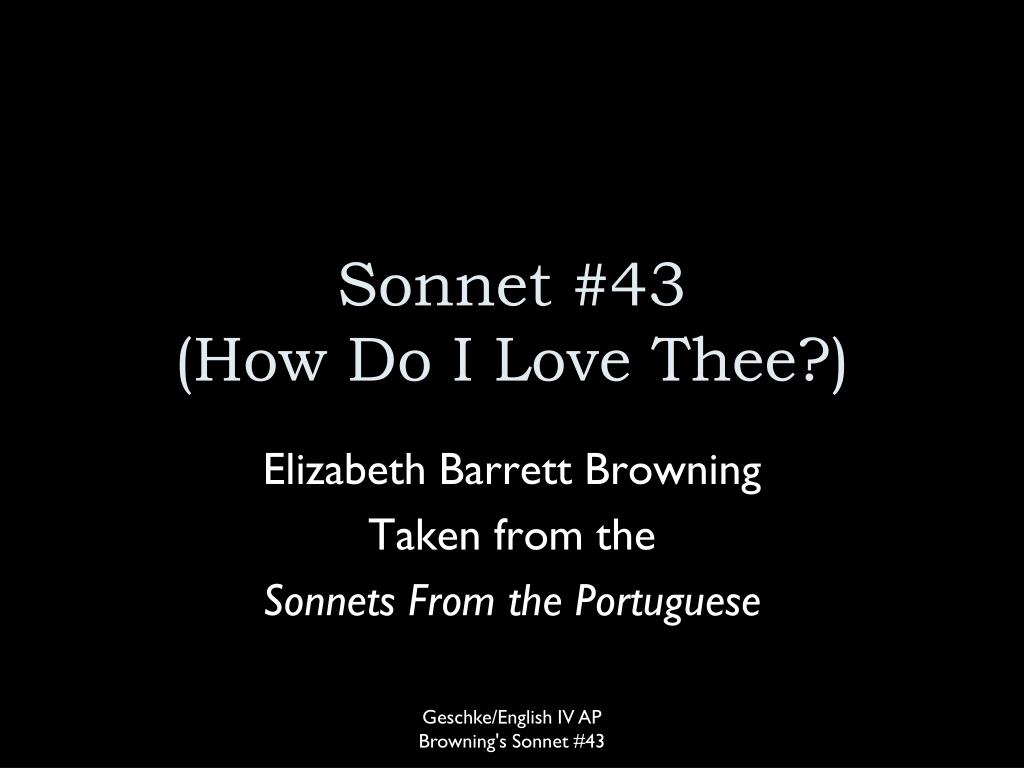


Ppt Sonnet 43 How Do I Love Thee Powerpoint Presentation Free Download Id
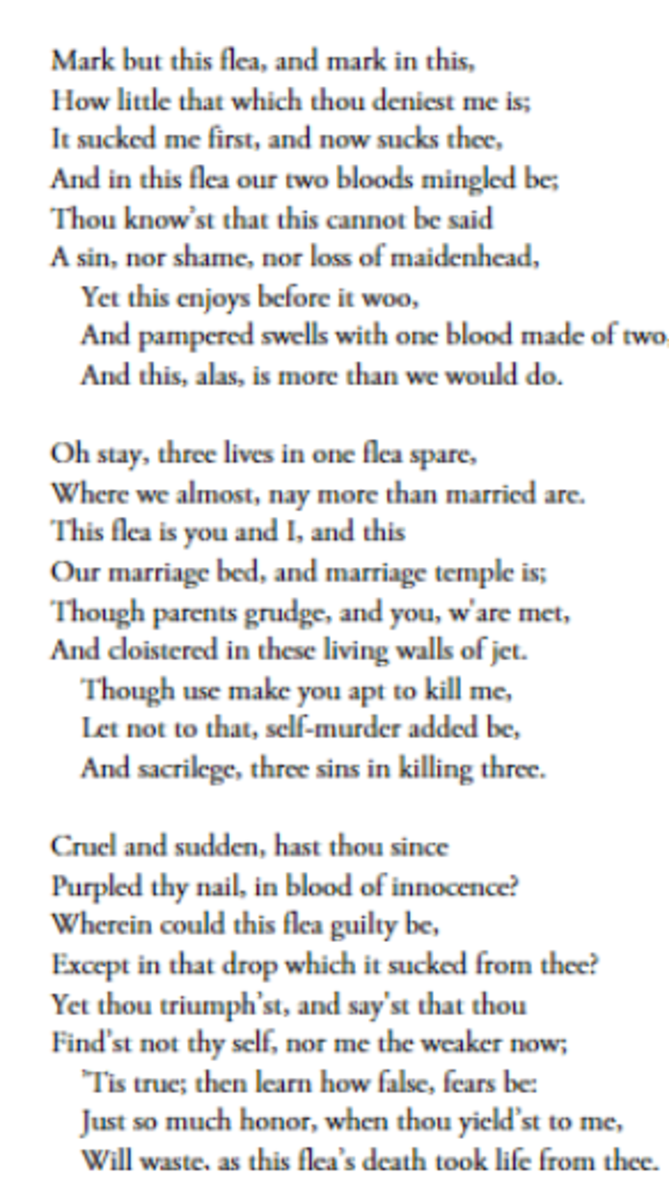


An Analysis Of Poem The Flea By John Donne Owlcation Education
Let me count the ways I love thee to the depth and breadth and height My soul can reach, when feeling out of sight For the ends of Being and ideal Grace I love thee to the level of everyday's Most quiet need, by sun and candlelightLet me count the ways I love thee to the depth and breadth and height My soul can reach, when feeling out of sight For the ends of being and ideal grace I love thee to the level of every day's Most quiet need, by sun and candlelight I love thee freely, as men strive for right I love thee purely, as they turn from praise I love thee with the passion put to useIf ever two were one, then surely we If ever man were loved by wife, then thee If ever wife was happy in a man, Compare with me, ye women, if you can I prizeprize Value thy love more than whole mines of gold, Or all the riches that the Eastthe East East Indies, southeast Asia, including India


Q Tbn And9gcssv1dommkmhy1r4lxvkhokljveucwxhsfke2zrnhlrofcfqgls Usqp Cau
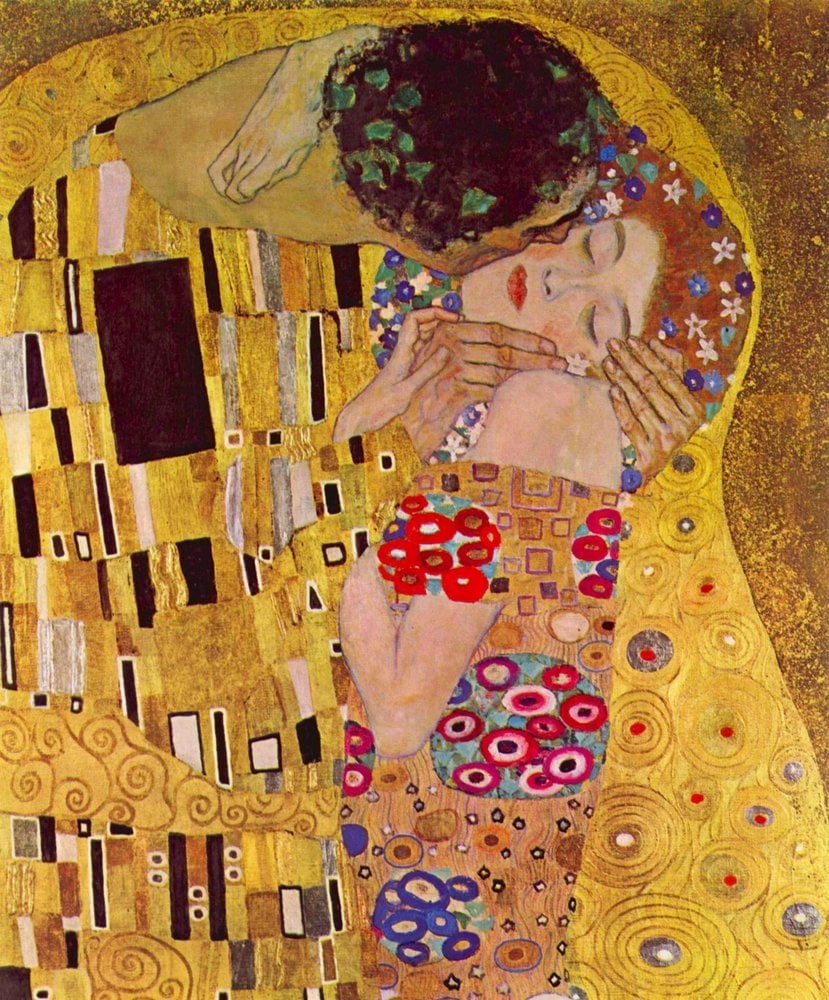


Elizabeth Barrett Browning How Do I Love Thee Sonnet 43 Genius



Macbeth Close Analysis Of Act 1 Scene 3 Lisa S Study Guides


Q Tbn And9gcsvvlrfp3lzukz0p31ph8yixuk8quswid1glrpx27urbestdj4j Usqp Cau



December 17 23 1862 Second Crossroads Projects White Heat



Ppt How Do I Love Thee Powerpoint Presentation Free Download Id


Literariness Org Wp Content Uploads 05 Litcharts Sonnet 18 Shall I Compare Thee To A Summer S Day 4 Pdf


Http Images Pcmac Org Sisfiles Schools Ms Desotocounty Hernandohigh Uploads Documentscategories Documents Annotation of thanatopsis Pdf



Annotating The Exam Anthology Mrs Nazir S Rhyme And Reason



Symptoms Of Love Free Essay Example



A Farewell To False Love Essay Example


2



Tis Not That I Did Choose Thee Hymnary Org



Elizabeth Barrett Browning Ocr Search Results Teachit English



Analysing Elizabeth Barrett Browning S Sonnet 43 Part One Dystopiajunkie Analysis Youtube
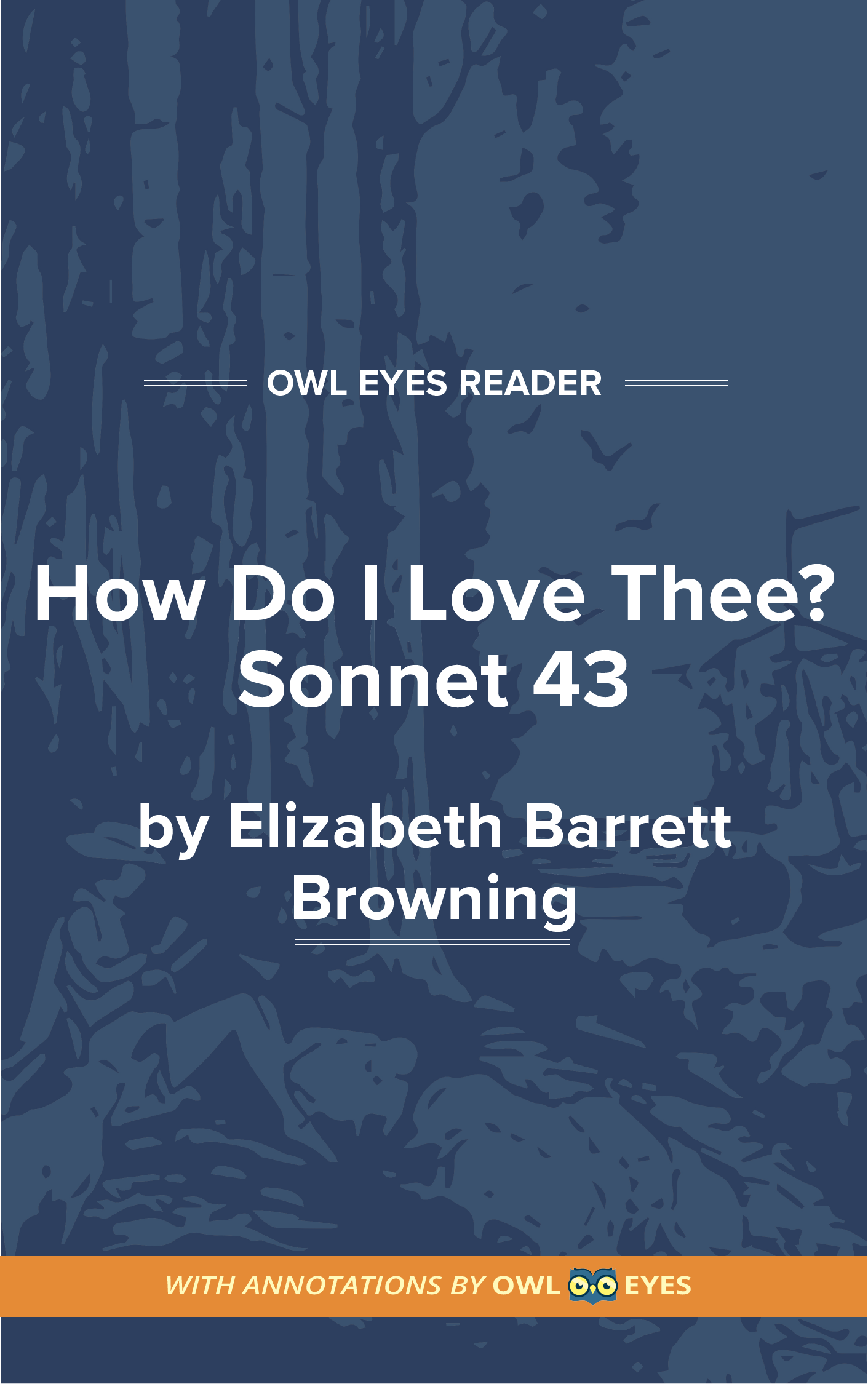


How Do I Love Thee Full Text And Analysis Owl Eyes



Sonnet 29 I Think Of Thee By Elizabeth Barrett Browning Analysis Youtube


2



Sonnet 43 How Do I Love Thee Knowledge Organiser Revision Mat Teaching Resources
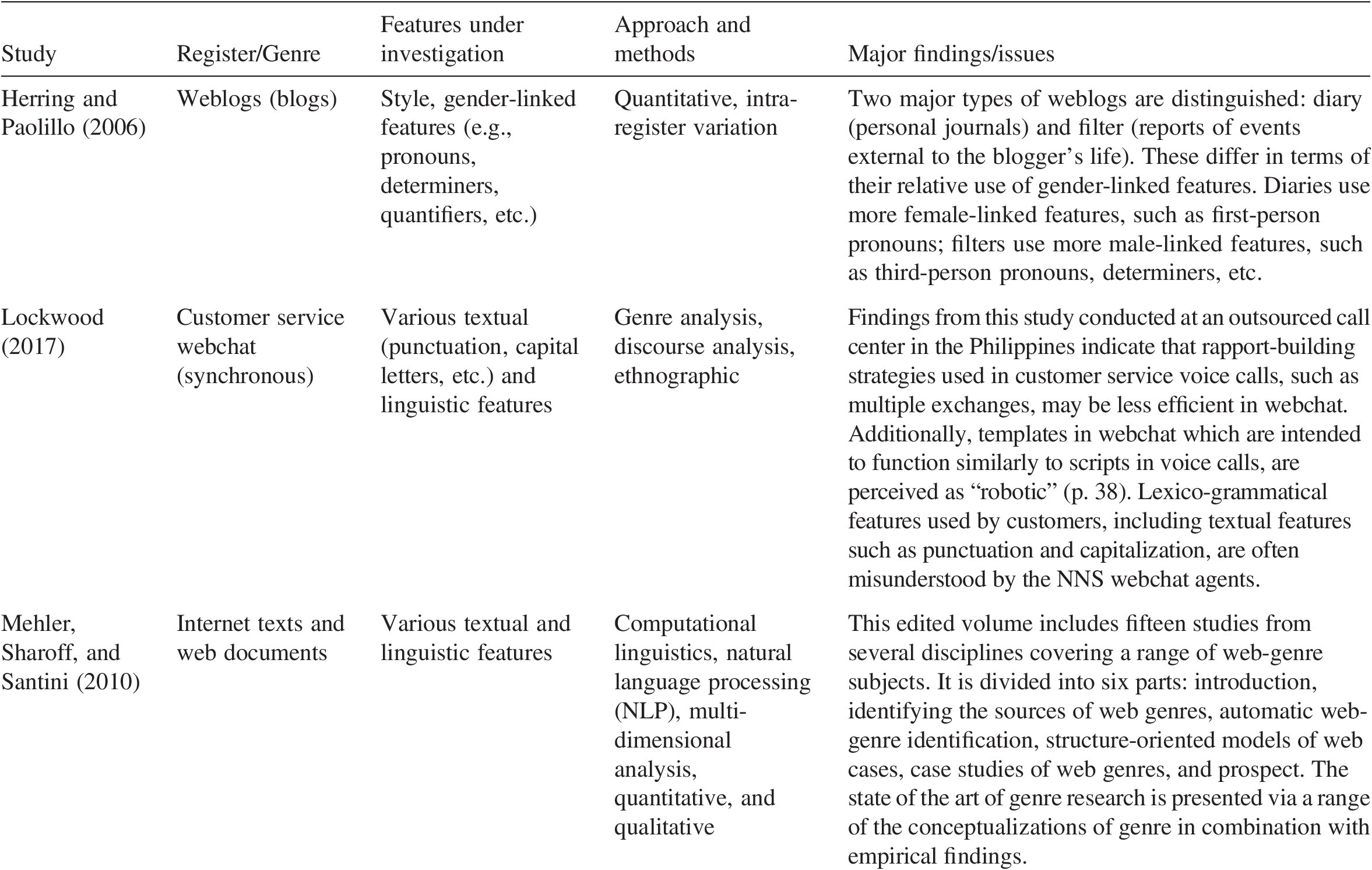


Appendices Register Genre And Style


Www Nms Org Getmedia b7e581 F3f0 4e9b 8dea 7615ff965d9a Donne The Broken Heart 14 Pdf Aspx



Ks5 Language And Literature Anthology Poetry For Edexcel 15 Onwards Teachit English



I Think Of Thee Sonnet 29 Poem Summary And Analysis Litcharts



Midterm Review Eng 102 Suny Wcc Studocu



Elizabeth Barrett Browning Ppt Download



Analysis Of The Poem To A Skylark By Percy Bysshe Shelley Owlcation Education


Www Engageny Org File Download Ela 10 1 1 Pdf Token Lwksb Lk



A Deep Dive Into John Coltrane S A Love Supreme By His Biographer Lewis Porter Pt 2 Wbgo


Www Tandfonline Com Doi Pdf 10 1080 x



Analyzed Poems



The Horses Ted Hughes Analysis Essay Example



Elizabeth Barrett Browning Ppt Download



Pdf How Do I Love Thee Let Me Count The Words The Social Effects Of Expressive Writing



Testi įkvėpkite Purtyti Love After Love Poem Analysis Comfortsuitestomball Com


Sonnet 130 My Mistress Eyes Search Results Teachit English


Q Tbn And9gctmnqdzg5 Lnonvffbbnukn0ems8ttvjbxctr7umynjbvy3ofiw Usqp Cau


Sonnet 29 I Think Of Thee Meaning And Interpretation



How Do I Love Thee Let Me Count The Ways Sonnets From The Portugese 43 Poem Summary And Analysis Litcharts


2



Pdf The Divine Image And A Divine Image



Ppt How Do I Love Thee Powerpoint Presentation Free Download Id



Ppt How Do I Love Thee Powerpoint Presentation Free Download Id
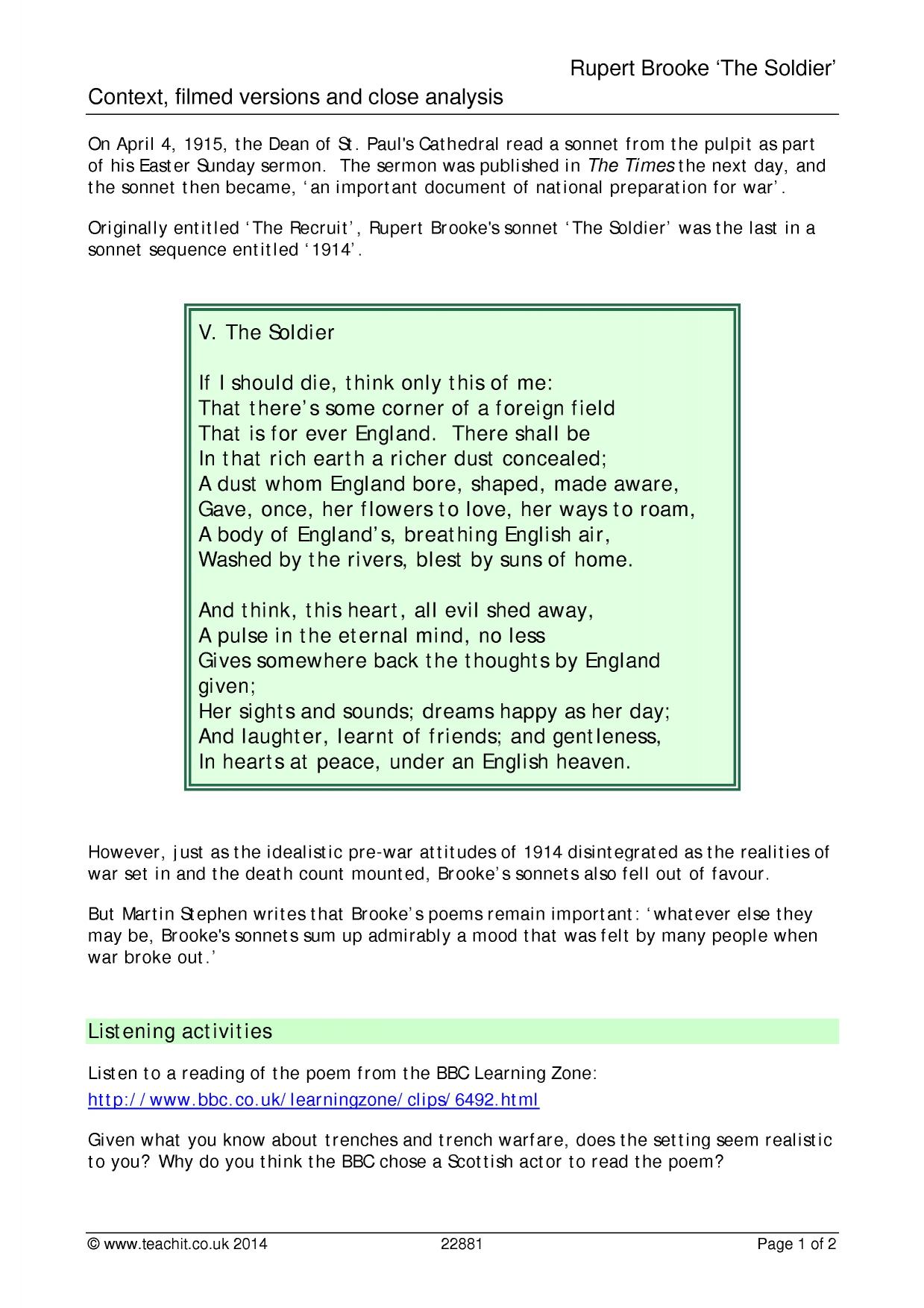


Ks4 Poetry Anthology Poetry For Wjec Eduqas 15 Onwards Teachit English


2



0 件のコメント:
コメントを投稿